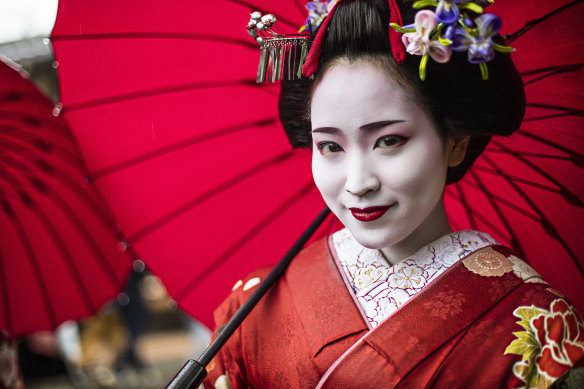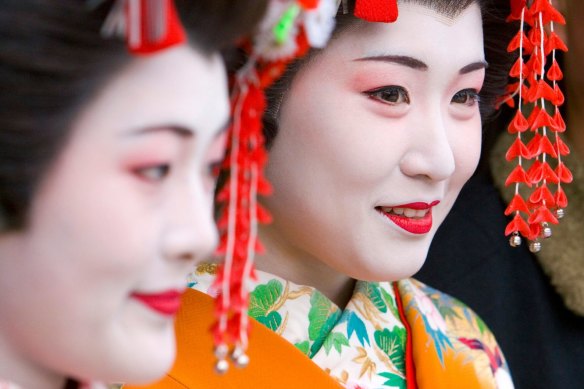
The volume of crowds that throng Gion’s lanes is at odds with the culture of exclusivity that traditionally surrounds the rituals-steeped world of geisha, known as geiko in Kyoto.

Refrain from bothering Maiko (also Geisha) while in Kyoto.Credit: iStock
Access to the world of geiko, who are accomplished masters of traditional art forms, from dance to music, often requires introductions via contacts, with select clients permitted at exclusive teahouse events.
Plans to limit access to Gion’s lanes follow several earlier initiatives aimed at preventing tourists from misbehaving in the district, which appear to have had limited effect.
Five years ago, Gion district council put up signs saying “no photography on private roads”, warning of fines of up to ¥10,000 yen ($102) for taking non-consensual pictures.
The issue has become even more critical since Japan reopened its borders in October 2022 after two and a half years of closure because of Covid, paving the way for a resurgence in tourism.
In one incident, a US tourist reportedly threw $US10,000 at a geisha along with the key to his hotel room.

A Maiko (an apprentice Geisha) in the Gion district of Kyoto, Japan. Credit: Jon Arnold Images Ltd / Alamy Stock Photo
More commonly, tourists block the paths of the performers, who are sometimes mistaken for sex workers in foreign cultures, demanding selfies.
Sometimes they enter private properties to take photos, Peter Macintosh, an expert on geisha culture, told the South China Morning Post. “It’s out of control,” he said.
A lack of cultural awareness is a key factor in causing discord between tourists and locals in Kyoto, according to James Mundy, of InsideJapan Tours, a tour operator.
Loading
“Kyoto was certainly seeing signs of over-tourism pre-pandemic, but it has become a bigger issue post-pandemic, as demand to travel to Japan has grown,” he told The Telegraph.
“However, over-tourism is not just about big crowds, it is about lack of cultural awareness which is a big part of the issue here – big tourist groups and DIY travellers keen to get a picture of the iconic geisha in the traditional streets of Kyoto but with a lack of understanding around culture and etiquette.”
Kyoto is not the only tourism hub in Japan in the spotlight because of concerns with over-tourism.
Officials in Yamanashi Prefecture announced this week that from this summer, hikers wishing to climb Mount Fuji, Japan’s most famous peak, will be charged ¥2000 each, with numbers limited in order to improve safety and reduce congestion.
In the late 1920s there were some 80,000 geishas but today only 1000 remain.
Teenagers are less likely to commit to the lengthy training in music, dance and etiquette required by the 18th-century tradition.
The pandemic spurred some geishas to innovate by providing Zoom calls or launching crowd-funding sites.
The typical geisha performance furnishes guests with an hours-long party, involving dance and games, alongside a splendid meal.
In the 1970s, Liza Dalby, a US anthropologist, became the first Westerner accepted into the geisha community, after studying the form for her phD.
Her skill on the shamisen – a plucked string instrument – was key to her entry to the cloistered community.
Dalby was invited to join a group in Kyoto, where she would earn a reputation as the “blue-eyed geisha” and become a household name in the country.
“They saw that I was serious in my study and they felt that I would not really be able to understand their lives unless I experienced it myself,” she said.
Telegraph, London









 Add Category
Add Category